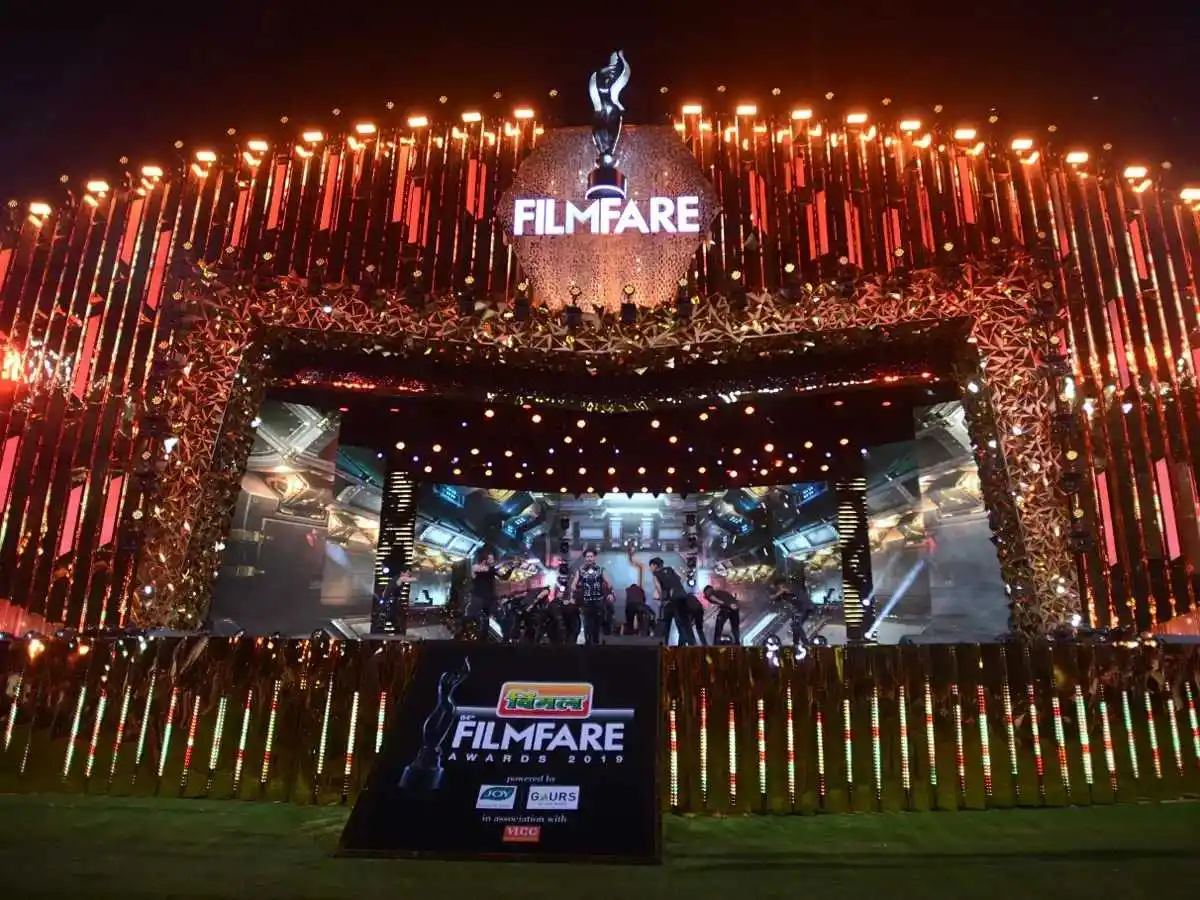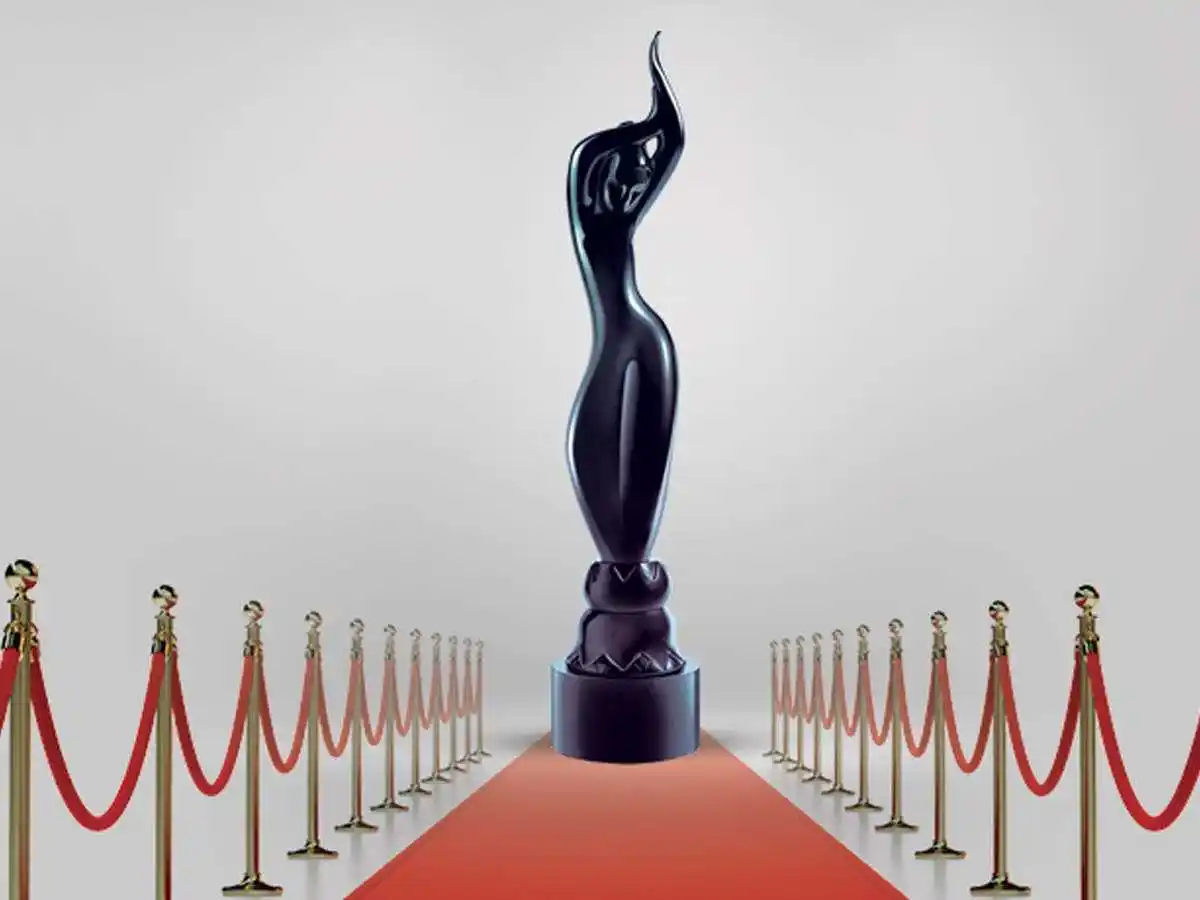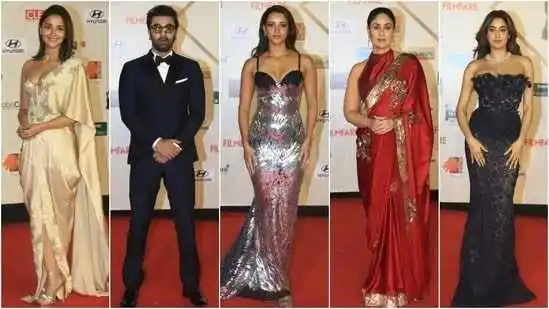Table Of Contents
Details
|
Event Name
|
Filmfare Awards
|
|
Organized By
|
Filmfare
|
|
Country Of Origin
|
India
|
|
Started On
|
March 21st, 1954
|
|
Filmfare Awards 2024
|
January 28th, 2024
|
|
Network
|
Sony Entertainment Television (2000-2017), Colors TV ( Present)
|
|
Hosted By
|
Karan Johar, Ayushmann Khurrana
|
|
Location
|
GIFT City Gandhinagar, Gujarat
|
|
Aired on
|
Colors TV
|
History
![filmfare awards history origin]() In 1954, the Filmfare awards were first presented. The award ceremony was initially referred to as The Clares after Clare Mendonca, a critic for The Times of India. Over 20,000 readers from all over India participated in the polls that determined the winners, and those who received the most votes received trophies. Only five awards were given out at the inaugural ceremony, which took place on March 21, 1954, at Mumbai's Metro Theatre: Best Film, Best Director, Best Actor, Best Actress, and Best Music Director.
In 1954, the Filmfare awards were first presented. The award ceremony was initially referred to as The Clares after Clare Mendonca, a critic for The Times of India. Over 20,000 readers from all over India participated in the polls that determined the winners, and those who received the most votes received trophies. Only five awards were given out at the inaugural ceremony, which took place on March 21, 1954, at Mumbai's Metro Theatre: Best Film, Best Director, Best Actor, Best Actress, and Best Music Director.
The first film to receive the Best Film award was Do Bigha Zameen. The first winners in the other four categories were: Bimal Roy for his direction of Do Bigha Zameen, Dilip Kumar for his performance in Daag, Meena Kumari for her performance in Baiju Bawra, and Naushad Ali for his music in Baiju Bawra. In 2017, the Filmfare Awards added a category for short films, and the jury included Vidya Balan and Gauri Shinde. Khamakha received the People's Choice Award for Best Short Film. Awards were also given to short films such as Chutney, Matitali Kusti, and Taandav.
Hollywood actor Gregory Peck was invited to attend the inaugural awards ceremony on March 21, 1954, at the Metro Theatre in Mumbai but was unable to attend due to a delayed aircraft from Colombo. Peck did, however, attend the reception that followed the award ceremony at Mumbai's Wellington Club (Gymkhana).
Statue/ Trophy
![filmfare awards history]() The sculpture, which depicts a woman with her arms outstretched in a dance number and her fingers touching, is known colloquially as The Black Lady or The Lady in Black. N.G. Pansare created its original design under the guidance of Walter Langhammer, the Times of India's art director. It is typically made of bronze, is 46.5 cm in height, and weighs about 5 kg. The statues were made in silver to commemorate the 25th anniversary of the awards and in gold to mark the 50th anniversary.
The sculpture, which depicts a woman with her arms outstretched in a dance number and her fingers touching, is known colloquially as The Black Lady or The Lady in Black. N.G. Pansare created its original design under the guidance of Walter Langhammer, the Times of India's art director. It is typically made of bronze, is 46.5 cm in height, and weighs about 5 kg. The statues were made in silver to commemorate the 25th anniversary of the awards and in gold to mark the 50th anniversary.
The Award Gallery has been producing the Filmfare trophy since 2000. The trophy had undergone very little alteration before 2012. But as of 2013, a significant alteration was done to give the trophy a 3-D appearance. For this alteration, there were two justifications stated.
First, according to the organizers, keeping up with the numerous technological advancements that have already occurred and will undoubtedly occur in the ensuing years was essential. This was also an attempt to adhere to the 2013 Filmfare in Mumbai award set's theme, A hundred years jump into the future.
Popular Awards
| 69th Filmfare Awards Winner 2024 |
| Award Category |
Nominated For |
Winner |
| Best Actress |
Rocky Aur Rani |
Alia Bhatt |
| Best Actor |
Animal |
Ranbir Kapoor |
| Best Actor (Critics) |
12th Fail |
Vikrant Massey |
| Best Actress (Critics) |
Mrs Chatterjee Vs Norway |
Rani Mukherji |
| Best Actress (Critics) |
Three Of Us |
Shefali Shah |
| Best Actor (Critics) |
Sam Bahadur |
Vicky Kaushal |
| Best Supporting Role (Male) |
Dunki |
Vicky Kaushal |
| Best Debut (Male) |
Faraaz |
Aditya Rawal |
| Best Debut (Female) |
Farrey |
Alizeh Agnihotri |
| Best Supporting Role (Female) |
Rocky Aur Rani Kii Prem Kahaani |
Shabana Azmi |
| Lifetime Achievement Award |
- |
David Dhawan |
| Best Music Album |
Animal |
Pritam, Vishal Mishra, Manan Bhardwaj, Shreyas Puranik, Jaani, Bhupinder Babbal, Ashim Kemson, Harshwardhan Rameshwar, Gurinder Seagal |
| Best Story |
OMG 2 |
Amit Rai |
For more information and in-depth knowledge about the winners. Check out the complete winners list of filmfare 2024.
The Red Carpet Event 2024
![filmfare red carpet 2024.jpg]()
Before the official ceremony starts, there is a part called The Red Carpet. Here, celebrities from Bollywood and beyond showcased their impeccable taste in fashion. The Red Carpet Event is studded with Bollywood's profound stars like Ranbir Kapoor, Vikrant Massey, Medha Shankar, Alia Bhatt, Sara Ali Khan, Jhanvi Kapoor, Tripti Dimri, Kareena Kapoor Khan, Varun Dhawan, Kartik Aaryan etc.
![birthday occasion]() Birthday Gifts
Birthday Gifts
![anniversary occasion]() Anniversary Gifts
Anniversary Gifts
![women]() Women
Women
![men]() Men
Men
![Couples]() Couples
Couples
![Couples]() Wedding Gifts
Wedding Gifts

 Birthday Gifts
Birthday Gifts
 Women
Women
 Men
Men
 Anniversary Gifts
Anniversary Gifts
 Wedding Gifts
Wedding Gifts
 In 1954, the
In 1954, the  The sculpture, which depicts a woman with her arms outstretched in a dance number and her fingers touching, is known colloquially as The Black Lady or The Lady in Black. N.G. Pansare created its original design under the guidance of Walter Langhammer, the Times of India's art director. It is typically made of bronze, is 46.5 cm in height, and weighs about 5 kg. The statues were made in silver to commemorate the 25th anniversary of the awards and in gold to mark the 50th anniversary.
The sculpture, which depicts a woman with her arms outstretched in a dance number and her fingers touching, is known colloquially as The Black Lady or The Lady in Black. N.G. Pansare created its original design under the guidance of Walter Langhammer, the Times of India's art director. It is typically made of bronze, is 46.5 cm in height, and weighs about 5 kg. The statues were made in silver to commemorate the 25th anniversary of the awards and in gold to mark the 50th anniversary.



 We now support international payments
We now support international payments
